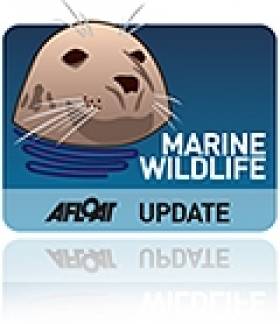Displaying items by tag: Sherkin Island Marine Station
Three Decades of Marine Data Published By Sherkin Island Marine Station
“A dream come true” is how Matt Murphy, founder of one of Ireland’s longest-running coastal research stations, describes publication of 35 years of key environmental data.
Phytoplankton records for the south-west Irish coast dating back to 1980 have been published on an international marine research website by Sherkin Island marine station.
The development comes at a time of mounting concern over this year’s marine heatwave extending across Europe, which has elevated sea temperatures beyond norms.
 Phytoplankton records for the south-west Irish coast dating back to 1980 have been collected by Sherkin Island Marine Station. Photo: Sherkin Island Marine Station
Phytoplankton records for the south-west Irish coast dating back to 1980 have been collected by Sherkin Island Marine Station. Photo: Sherkin Island Marine Station
A baseline for existing environmental conditions, such as that provided by the Sherkin station, will prove to be crucial in making comparisons as part of long-term research, Murphy, now 88, says.
The areas covered for Sherkin Island marine station’s first dataset are for Roaringwater and Long Island bays, and south of Sherkin island off Baltimore,west Cork, and the records date from 1980 to 2014.
The sampling was conducted at 12 coastal stations, eight within Roaringwater Bay/Long Island Bay, and four from 1.5 km to 17.5 km offshore in open waters south of Sherkin.
Stations were visited approximately every 12 days from April to October each year, within a period from 1980-2014.
Standard air temperature records from the manual weather station at Sherkin covering the same time period, together with records from the automated weather station from 2004, offer comparisons with the marine records for climate-related studies, the station notes.
“We have another large dataset on 145 sites on the rocky shoreline extending from Cork harbour to Bantry, and that will take another two years,” Murphy says.
“It has been a very very long road, not only in collecting the data but in sorting it and figuring out the best place to put it,” Murphy says.
“We finally settled on putting it up on the Global Biodiversity Information Facility (GBIF.org ), thanks to the help of the National Biodiversity Data Centre,” he says.
This ensures there is open access to 35 years of data on this part of the Irish coastline, he notes.
 Sherkin Island off the coast of West Cork, Ireland
Sherkin Island off the coast of West Cork, Ireland
“There are so many people to be thankful to, primarily all the volunteers who worked on the survey and my family, but everyone who supported the station along the way,” Murphy says.
Sherkin Island Marine Station was founded in 1975 by Murphy and his late wife, Eileen and was run by Matt and his family until 2015.
Murphy is now retired and has been working with his family, including his daughter Susan Murphy Wickens, on the archive.
Sherkin Island Marine Station Phytoplankton Records from the Southwest Coast of Ireland. Series 1: Long-term data series from Roaringwater Bay / Long Island Bay and South of Sherkin Island, Co. Cork, 1980-2014 is available here
'Ireland's Hidden Depths' Uncovered in New Book
The wealth of marine wildlife inhabiting the shallow waters around the Irish coast is highlighted in a new book.
Ireland's Hidden Depths, published by Sherkin Island Marine Station, features photography by Paul Kay, who has studied the marine wildlife of West Cork for almost 30 years.
The book features more than 200 of his photographs, illustrating "a wealth of massively diverse and amazing marine life, glorious kelp forests and spectaucular underwater scenery."
Matt Murphy, director of Sherkin Island Marine Station, said that he hopes the book will give readers "a new perspective on the sea and encourage a sustained interest in its wonder and potential".
The Southern Star has more on the story HERE.























